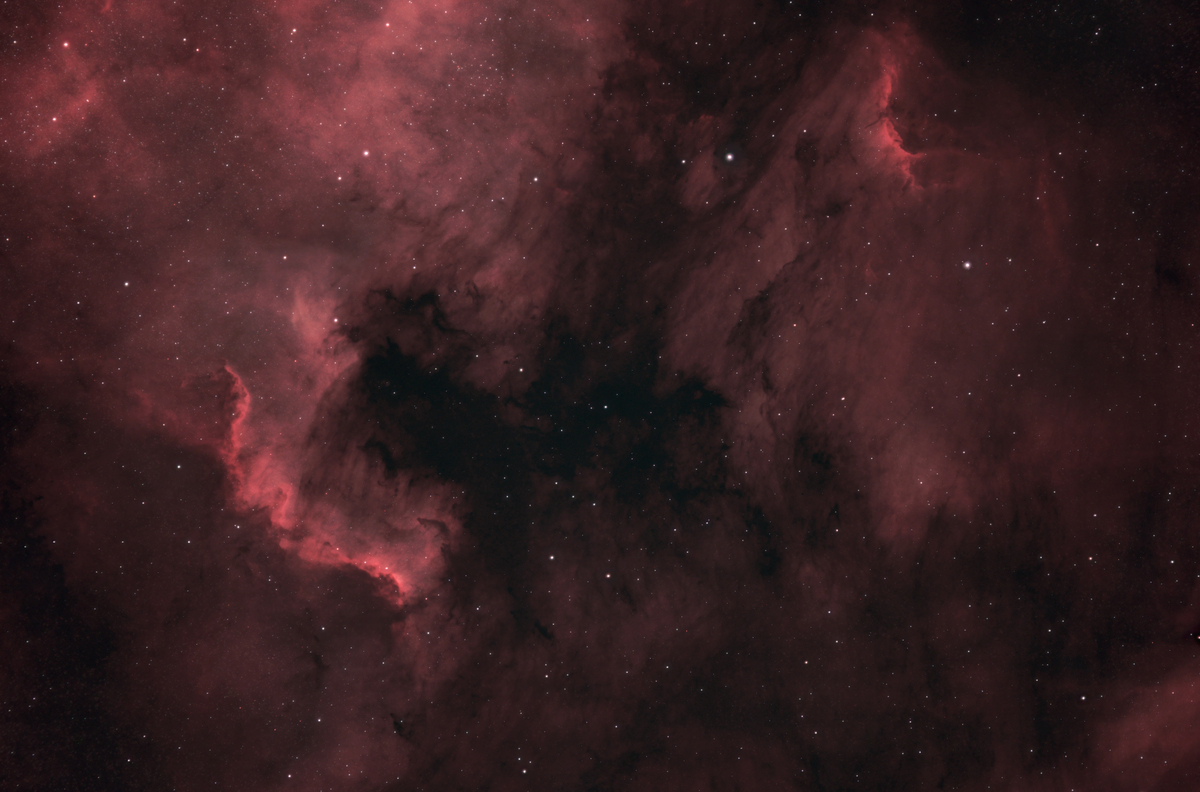The Eastern Veil Nebula
The Veil Nebula is a cloud of heated and ionized gas and dust in the constellation Cygnus, a supernova remnant and part of the Cygnus Loop. The source supernova was a star 20 times more massive than our Sun, which exploded between 10,000 and 20,000 years ago. NGC 6992 is around 2,400 light-years from Earth and is expanding at a velocity of about 1.5 million kilometers per hour.
Acquisition
HEQ5 Pro Rowan Belt Modded German Equatorial Mount
William Optics Zenithstar 73 Refractor - 420mm f/5.9
ZWO ASI 2600MC Pro Cooled Camera - Minus 10 Degrees Celcius
ZWO 120MM Mini Guide Camera
Altair Starwave 50mm Guidescope
ZWO EAF Focuser
Stellarium
Plate Solving
PHD2 Guiding Software with multi-star guiding and Astrophotography Tool
Data
5 Hours and 25 Minutes x 180 second Exposures
Gain 100 - Offset 50
Calibrated with Dark Frames
Bortle 5/6
Processing
Stacked in Deep Sky Stacker
Processed in Adobe Photoshop
Levels Adjustment and initial Linear Stretching
Gradient Xterminator to balance background colour
Star Xterminator to separate Stars and Nebulosity
Star Layer Mask Colour Range 'Highlights' to increase star saturation
Background noise reduction on Nebulosity layer
Non-linear Curves adjustments on Nebulosity layer
Nebulosity layer masking; exposure, contrast and detail enhancement
 NGC 6992 - Eastern Veil Nebula
NGC 6992 - Eastern Veil Nebula by
Joel Spencer, on Flickr


 California Nebula
California Nebula Rosette
Rosette Soul Nebula
Soul Nebula NGC 6992 - Eastern Veil Nebula
NGC 6992 - Eastern Veil Nebula

 I haven't managed many Astro images this year thus far, clouds!
I haven't managed many Astro images this year thus far, clouds!